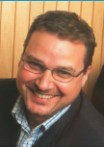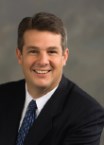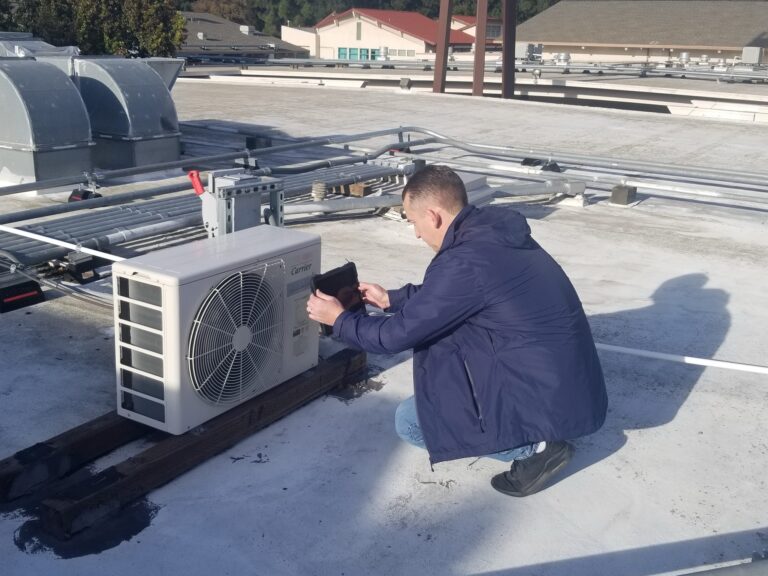How do we “level the playing field” with other senior business leaders?
It’s the eternal question in corporate real estate (CRE) and facilities management (FM) circles. But instead of asking how to get a seat at the table, the right question to ask is Why don’t we have a seat at the table today?
The answer quite simply is that we haven’t yet earned it. Just to be clear, meeting quarterly or annually with the business units or senior management team to review CRE/FM plans is still what the majority of organizations in our industry do, and they consider those meetings proof that they’ve got a seat at the table. Sadly, that’s not the case; it simply perpetuates the legacy “ordertaker” mindset that CRE/FM teams carry.
As harsh at it may sound, we CRE professionals have become victims of our own success. Certainly, a great deal of value has occurred in the industry and produced significant cost savings— in fact, maybe more than from any other functional area of the enterprise. Top performers in CRE/FM have gained a reputation for being reliable, responsive and productive. We are known to have a practical, get-it-done attitude, which is why the C-suite can come across as not valuing what we do or, to put it more bluntly, ignoring us.
Simply put, as an industry, CRE/FM has too often acted and measured its performance like a back-office function. So it’s no wonder that senior enterprise executives often view us as such. We’ll call you if we need you seems to often be the perspective the C-suite has toward CRE/FM. Our industry is not invited to shape the corporate agenda or the strategic vision of the enterprise, but our peers — Finance, HR and Legal — often are at that table.
A few innovators have embraced next-generation sourcing models and globalized their operations, but even fewer have achieved the exalted status of strategic business partner. While these are the exceptions, they show us just how much is possible for CRE/FM in terms of enabling and even transforming the business.

End-User Viewpoint
BY PETER DORAN
Global Head of Real Estate, Nokia
Ensuring a Seat with the C-suite by Contributing to a Successful Transformation
Nokia’s Networks business is emerging from a highly successful two-year transformation. The Real Estate (RE) team has played a very active role in this transformation and excellent communications have contributed significantly to our success.
To deliver the best results, RE needs to have a voice at the most senior levels of the company. But with every function demanding the time and attention of the C-suite, how can RE be certain of being heard? We found that taking a very straightforward, fact-based approach to communications with executives worked best. Providing consistent data to show how RE’s objectives and actions are aligned with the company’s strategy and operations enables us to prove our relevance and demonstrate our progress over time.
To engage the business in RE issues, we have identified some 300 business leaders who work with our colleagues on relevant topics. This ‘Business Relationship Management’ approach helps our teams take an active role in planning and executing RE changes and ensures that our team is focused on the areas that are most important to the business.
We also engage with end-users at every level in the company through Building User Group meetings, which encourage the people who actually work in our sites to contribute suggestions, as well as give feedback on how the RE team is doing.
Peter Doran heads global Real Estate and Facilities for the Networks business within Nokia. He is recognized for his innovative and strategic approach on property, workplace concepts and outsourcing, honed over more than two decades in contracting, property and facilities management and project execution.
In order to get a seat at the table, we must redirect our hard work, refine our strategic thinking and better align our strategic roadmap to the C-suite agenda by continuing to produce immediate, tangible results and focusing on the longer-term strategic framework. That’s how CRE/FM’s potential value contribution to the enterprise can increase exponentially.
Mapping the Strategic Agenda
The good news is that CRE/FM leaders are well positioned to engage with senior leaders across the enterprise because many of the critical issues and daily challenges that we face have become more prominent within the broader business agenda. The Conference Board‘s 2013 “CEO Confidence Survey” highlights the direct points of alignment. Three of the top issues cited by CEOs were:
- Human capital/talent management
- Operational excellence
- Innovation
Let’s examine these areas to demonstrate how CRE/FM pros can better apply their knowledge and experience to benefit the business—whether by mitigating risks or enabling the business to seize opportunities.
Human Capital/Talent Management
Human capital/talent management is among the brightest points on the CEO’s radar, thanks to dramatic demographic shifts and advancements in technology. Combined, these forces are redefining the nature of work and the workforce itself, presenting clear and significant implications for our discipline
Just consider the uproar when Marissa Mayer, Yahoo CEO, endorsed a policy that limited telecommuting. Judging by the discourse this created across the CRE/FM community, many colleagues viewed it as a retrograde decision. If employees are required to come in to an actual office workspace, they reasoned, aren’t we reverting from our recent progress of the alternative and “work anywhere” virtual office environments?
In my view, Mayer’s higher-order motives were to reignite a culture around teamwork and human interaction, which her company sorely needed, as earnings, profitability and market share were in serious decline when compared to Google. I realized just how far the pendulum of conventional wisdom had swung in favor of remote working, even though many in the CRE/FM community were initially opposed to and even threatened by the advent of telecommuting a few years ago.
The point is that CEOs don’t think purely in terms of bricksand- mortar and neither should CRE/FM leaders. Yes, we have the technology to work productively and cost-effectively from anywhere, but the real issue is the value and quality of that work and the connectedness people feel to their companies and colleagues that contribute to creating a corporate culture. So our job must be to devise the environments, systems and capabilities so workers can enhance the quality and value of their work no matter where they are physically located.

End-User Viewpoint
BY RICHARD KRIVA
Vice President, Global Real Estate Honeywell International
Getting a seat at the table with the C-suite is a matter of framing corporate real estate in a way that’s important to leadership. First, find out what are they trying to drive—is it growth? Productivity? Employee retention? Identify the key measurements of success for that particular C-suite leader—the measurements they communicate to investors. Put real estate in the context of those measurements.
Operational Excellence and Innovation
Operational excellence and innovation are also perennial priorities for CEOs. Why? Because they are the engines of sustained business success in any industry, not just the fast-moving, new industries like technology or bio-tech. The concepts of creative destruction and disruptive innovation have received a lot of attention, for good reason, over the past decades. For CRE/FM leaders, the opportunity lies in finding new ways to drive that success. Remember, this is about more than taking out costs. For internal customers, innovation assumes other forms. It’s about anticipating and filling customer demands, and especially in striving to create a set of new demands and experiences.
A basic example is what I call “the sushi” story. In the cafeteria at one of my former employers, the line for the sushi station (the premium, high-cost offering) was always much longer than those for the hot meals, salad or sandwich bars. That variance had opportunity—with a capital “O”—written all over it. Could we hire delivery people to bring sushi orders directly to employees’ desks, rather than having them wait in line or perhaps leave the building? Could we add more sushi stations in unused areas of the cafeteria to meet peak demand? Are there “sushi-like” alternatives we should be offering?
From the customer’s perspective, surely there were many options to increase satisfaction. And from a business perspective, offering more sushi in less time would ultimately boost employee productivity and collaboration by keeping folks in the building and talking to each other. But if you only considered cost in this equation, you would only see that more sushi means higher investments—ultimately missing the bigger picture of expanding your ability to offer greater value, enhance the employee experience and drive innovation out of a basic food offering in your cafeteria.
Yes, cost pressures are real. But when you can deliver what people want (the sushi and a better/healthier dining experience) and greater value (higher productivity and more collaboration), the upside of operational excellence significantly outweighs the downside of incrementally higher costs. That’s a winning business case for CRE/FM, especially when leaders start asking themselves about other parts of the dining experience that could be disrupted or reinvented.
Rebooting RE/FM:
6 Ways to Align with the C-Suite
- Be an enabler, not an order-taker. Devising and proposing solutions proactively is a way to build sustainable, trusted relationships with key business and functional stakeholders. Plus, it’s an opportunity to add value consistently across the business cycle, rather than at infrequent transactional or operational events.
- Focus on people, culture and connectivity—not facilities and real estate. Our job is to make the company’s most valuable asset — its people — more productive and collaborative. Inspiring people and unleashing their creativity through forward-thinking workspaces and quality facilities adds a lot more value than simply knocking a few more dollars off a supplier budget.
- Translate values into spaces and services. Physical workspace should be an expression of corporate values and the corporate brand— especially when sustainability is a top priority. The service levels provided by CRE/FM can and should reflect core values, too.
- Use metrics that emphasize value, not just cost. Six Sigma and advanced quality measures should be re-evaluated and implemented on a proactive basis. Establish balanced scorecards, dashboards, KPIs, SLAs and benchmarking processes that are truly incorporated into a performance management toolkit for CRE/FM leaders.
- Think outside the function. Knowledge of CRE/FM best practices and current industry standards is critical, but being eternally curious about the business is the best way to create innovative and disruptive new ways to add value and drive business enablement. The top talent in our industry — just as in finance, sales, marketing, IT and other functional areas — truly get the business and are perceived by the C-suite as business leaders, not functional enablers.
- Communicate, communicate, communicate. The “location, location, location” rule of retail applies here. CRE/FM leaders are in the communication business as much as they are in the business of buying services and managing suppliers. To do so, you will need to build your personal and departmental brand and communicate your value proposition relentlessly.
The whole idea of innovation in the CRE/FM community needs to be revisited, and we need to expand our view of what that really means to business stakeholders. Some obvious improvements have happened, but there’s a long road ahead. The innovation horizon must be broader than creating alternative workplace environments, embedding radio-frequency identification (RFID) in smart buildings, getting faster Wi-Fi and expanding bandwidth capacity to more parts of the corporate campus. Mobile workforces are sprouting up so quickly that innovation is imperative, if not critical. In return, what we define as ‘immediate’ has to upgrade to ‘urgent’ when it comes to identifying the right opportunities and shaping the right plans. If we’re to call ourselves innovators, we have to shift our thinking to truly reflect it. Again, the opportunity exists for CRE/FM leaders who are inclined and motivated to accept the invitation to innovate.
Technology, Risk Management and Collaboration
Looking beyond the areas identified by the Conference Board survey, we as an industry must continue to identify and embrace technology to transform how we run and manage our operations. How do we harness new technologies for improved decisionmaking, integration into the broader enterprise systems and to measure the success of each initiative we undertake? As leaders, we must fully understand our range of choices and not abdicate this responsibility to our IT organizations.
Beyond IT and HR, CRE/FM leaders should synchronize their efforts with procurement, finance and legal. The sourcing realm is the most obvious area where we can ensure invested dollars produce bottom-line results. The more strategic view incorporates valueoriented metrics, of course. We can and should share our success stories and lessons learned in areas such as supplier relationship management and governance, performance management and contracting structures. Best practices from within the CRE/FM realm are relevant across the enterprise, particularly when you recall that spend in this area is generally the second- or third-largest behind People (Salaries & Wages) and IT.
Enterprise risk management, business continuity and physical and virtual security are still other areas where integrated, cross-functional collaboration will yield better outcomes for the corporation as a whole. There is no reason why CRE/FM professionals can’t start or catalyze these necessary conversations. From super storms and natural disasters to terrorism to competitive espionage and cybercrime (much of which involves physical plant breaches and rogue vendors), many of the most serious threats to large enterprises have dimensions within our purview. And of course, these are the very items that keep CEOs up at night.
The CRE/FM agenda clearly intersects and overlaps with that of business leaders. As result, we executives will need to adopt a broader, bigger-picture view of the business and reconceive our role within it. It’s time to think and act a little differently. Cultural transformation. Organizational change management. Business enablement. Innovation strategies. That’s what CEOs think about and act on every day. And there’s no reason CRE/FM leaders can’t join them in those endeavors and, ultimately, join them—and other Functional areas of the enterprise— at the table.





